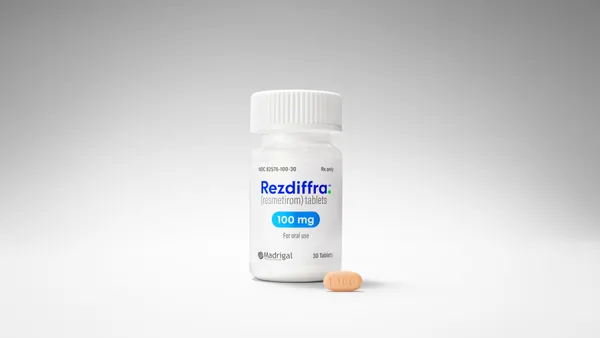36 September 2008 VIEW on Marketing PATIENT EDUCATION When 38% of a brand’s sales are lost to nonadherence, * perhaps the current approach to treatment adherence is not as effective as it could be. Shifting the focus of adherence programs away from the patient as an observer and toward the patient as a participant in the decision making process may help to increase adherence. To understand how to make the shift toward self management, it will help to examine current adherence programs from the following patient perspectives. “Do I want to take this medicine each day, even though it makes me feel sick to my stomach?” Perspective No. 1 At the end of the day, it’s up to the patient. In asking patients to be adherent to a treatment plan, you are really asking them to make a choice. To help patients make the right choices, selfmanagement programs need to be based on patientcentered approaches, such as shared decision making and chronic disease self management. An effective program is one that helps patients assess their readiness for change and then prioritize those changes based on what is most important to them. Giving patients the information, tools, and skills they need to “own” their decisions will also give them the confidence to talk with their physicians about what is and is not working. “These instructions are so confusing. What does `Take 2 pills 2 times a day’ really mean?” Perspective No. 2 It’s not just what you say, it’s how you say it. A selfmanagement plan is only as effective as it is comprehensible. Many leading organizations — including the AMA, FDA, NIH, NCQA, and PhRMA — promote health literacy principles as essential components of effective education. Health literacy is defined as the degree to which individuals have the capacity to obtain, process, and understand the basic information and services needed to make appropriate health decisions. HealthEd recently audited more than 150 online and offline patient education tactics and found that their content was, on average, at a 10thgrade to 11thgrade reading level. Some tactics were even as high as a 19thgrade reading level. Yet research shows that almost half of American adults read at or below an 8thgrade reading level. + A successful selfmanagement program must be not only clinically sound but also comprehensible and actionable. After all, if patients cannot process and understand the information provided, they cannot act upon it, even if they believe it is the best choice for them. “I know I need to eat healthier food to help lower my cholesterol, but I don’t want to give up Sunday brunch at the diner.” Perspective No. 3 Knowing you should doesn’t always mean you will. Much time and effort has been dedicated to developing patient programs that focus on medicine reminders. But if patients never start treatment, then there is no medicine to remind them to take. It is essential that selfmanagement programs start by addressing ambivalence. For example, patients may be unsure that the benefits of following a treatment plan outweigh the potential risks and costs. Helping patients acknowledge and uncover ambivalence early creates a teachable moment that can inspire change now by educating patients on the consequences of waiting until later. Only after patients have been coached through identifying and resolving their ambivalence can a program address the various other factors that influence medicine taking behavior, such as forgetfulness. Conclusion Pharmaceutical marketers have an opportunity to initiate a shift away from traditional adherence models by integrating these three key perspectives into innovative selfmanagement programs. *Cutting Edge Information. Pharmaceutical Patient Adherence and Disease Management. http://www.cuttingedgeinfo.com. +Communicating with patients who have limited literacy skills: report of the National Work Group on Literacy and Health. J Fam Pract. 1998;46:168176. HealthEd HEALTHED, Clark, NJ, develops patient educational marketing programs for pharmaceutical, biotech, and device companies. For more information, visit HealthEd.com. Making the Shift From Adherence to SelfManagement A look at adherence from the patient’s perspective Christopher G. Kelly, M.Ed., Manager, Health Education Conduct your own assessment Do the selfmanagement (adherence) programs that you, as a pharmaceutical marketer, develop: Encourage patients to make their own decisions about selfmanagement? Meet health literacy principles in order to promote comprehension and action? Address ambivalence early in the treatment process and pave the way for realistic change? Pharmaceutical companies deliver so much more than medicine. That’s why they partner with HealthEd. Our strategies support the individual needs of patients, their families, and the treatment teams who care for them. Our passion is the whole patient. Educating Patients Building Brands ph 908.654.4440 www.HealthEd.com 2007 HealthEd “ It’s my diagnosis, but it’s not just me living with HIV.”
An article from


Making the Shift From Adherence to Self-Management
Filed Under:
Commercialization








